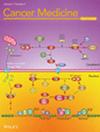Detecting PI3K and TP53 Pathway Disruptions in Early-Onset Colorectal Cancer Among Hispanic/Latino Patients
Abstract
Background/Objectives
This study aims to characterize PI3K and TP53 pathway alterations in Hispanic/Latino patients with early-onset colorectal cancer (CRC), focusing on potential differences compared to non-Hispanic White patients. Understanding these differences may shed light on the molecular basis of CRC health disparities.
Methods
Using cBioPortal, we conducted a bioinformatics analysis to evaluate CRC mutations within the PI3K and TP53 pathways. CRC patients were stratified by age and ethnicity: (1) early-onset (< 50 years) versus late-onset (≥ 50 years) and (2) early-onset in Hispanic/Latino patients compared to early-onset in non-Hispanic White patients. Mutation frequencies were assessed using descriptive statistics, with chi-squared tests comparing proportions between early-onset Hispanic/Latino and non-Hispanic White groups. Kaplan–Meier survival curves were generated to assess overall survival for early-onset Hispanic/Latino patients, stratified by the presence or absence of PI3K and TP53 pathway alterations.
Results
Significant differences were noted when comparing early-onset CRC in Hispanic/Latino patients to early-onset CRC in non-Hispanic White patients. PI3K (47.1% vs. 35.2%, p = 9.39e-3) and TP53 (89.1% vs. 81.7%, p = 0.04) pathway alterations were more prevalent in early-onset CRC among Hispanic/Latino patients, with AKT1 (5.1% vs. 1.8%, p = 0.03), INPP4B (4.3% vs. 1.4%, p = 0.04), and TSC1 (7.2% vs. 3.1% p = 0.03) gene alterations also significantly higher in this group. Significant differences were observed in TP53 mutations between colon adenocarcinomas (90% vs. 79.1%, p = 0.03), with higher prevalence in Hispanic/Latino patients when stratified by tumor site. No significant differences were observed between early-onset and late-onset CRC patients within the Hispanic/Latino cohort.
Conclusions
These findings highlight the distinct role of PI3K and TP53 pathway disruptions in early-onset CRC among Hispanic/Latino patients, suggesting that pathway-specific mechanisms may drive cancer health disparities. Insights from this study could inform the potential development of precision medicine approaches and targeted therapies aimed at addressing these disparities.


 求助内容:
求助内容: 应助结果提醒方式:
应助结果提醒方式:


